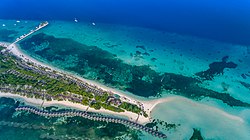Microstate
[1] Some recent attempts to define microstates have focused on identifying qualitative features that are linked to their size and population, such as partial delegation of their sovereignty to larger states, such as for international defense.
Other examples are small, isolated island states in the Pacific Ocean that gained independence from the European or Australasian powers: Nauru, Palau, and Tuvalu.
The smallest political entity recognized as a sovereign state is Vatican City, with fewer than 1,000 residents and an area of only 49 hectares (120 acres).
[1][5][6][7] According to some scholars the quantitative approach to defining microstates suffers from such problems as "inconsistency, arbitrariness, vagueness and inability to meaningfully isolate qualitatively distinct political units".
[5][8][9] Newer approaches have proposed looking at the behaviour or capacity to operate in the international arena in order to determine which states should deserve the microstate label.
In some cases, this impedes neutral and formal decision-making and instead leads to undemocratic political activity, such as clientelism, corruption, particularism and executive dominance.
[13] Some microstates with a history as British colony have implemented some aspects of a consensus political system, to adapt to their geographic features or societal make-up.
Those types of states, often labelled as "microstates," are usually located on small (usually disputed) territorial enclaves, generate limited economic activity founded on tourism and philatelic and numismatic sales, and are tolerated or ignored by the nations from which they claim to have seceded.
The Republic of Indian Stream, now the town of Pittsburg, New Hampshire, was a geographic anomaly that had been left unresolved by the Treaty of Paris, which ended the American Revolutionary War, and was claimed by both the United States and Canada.





